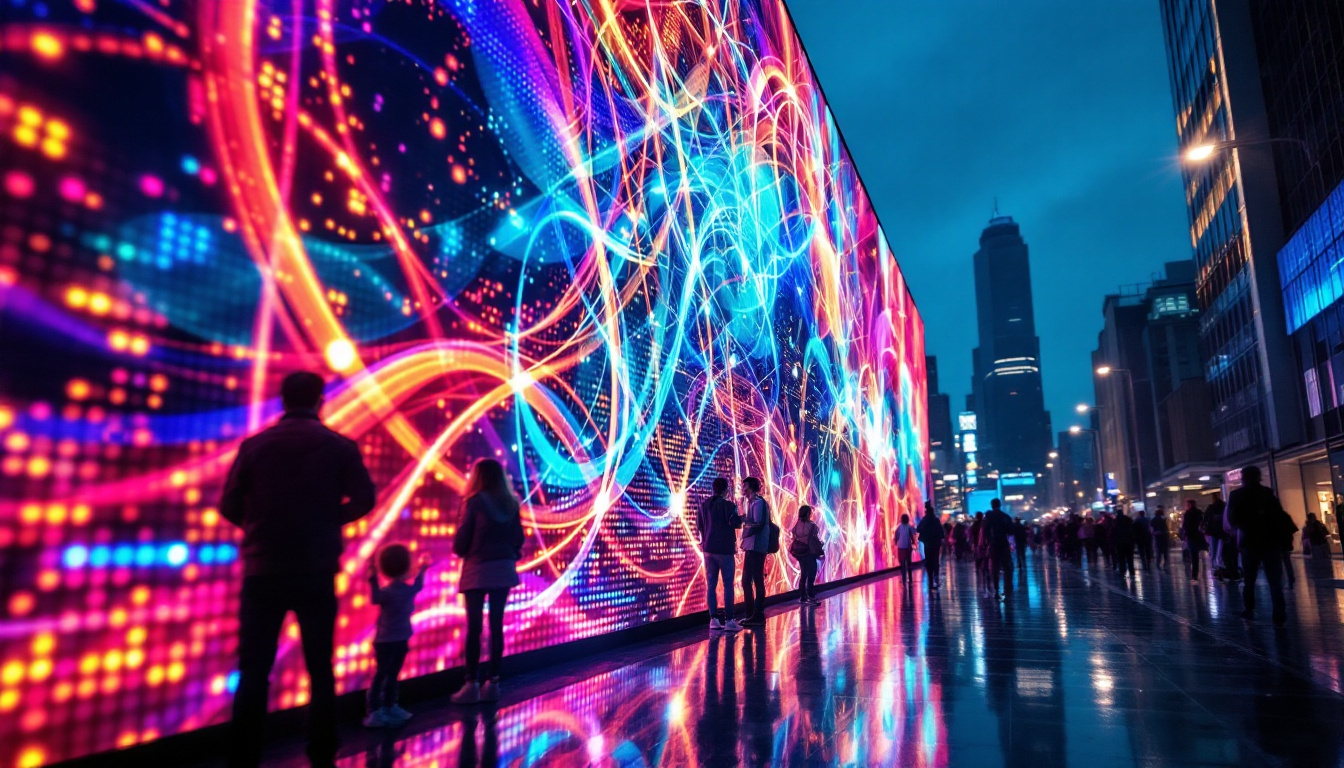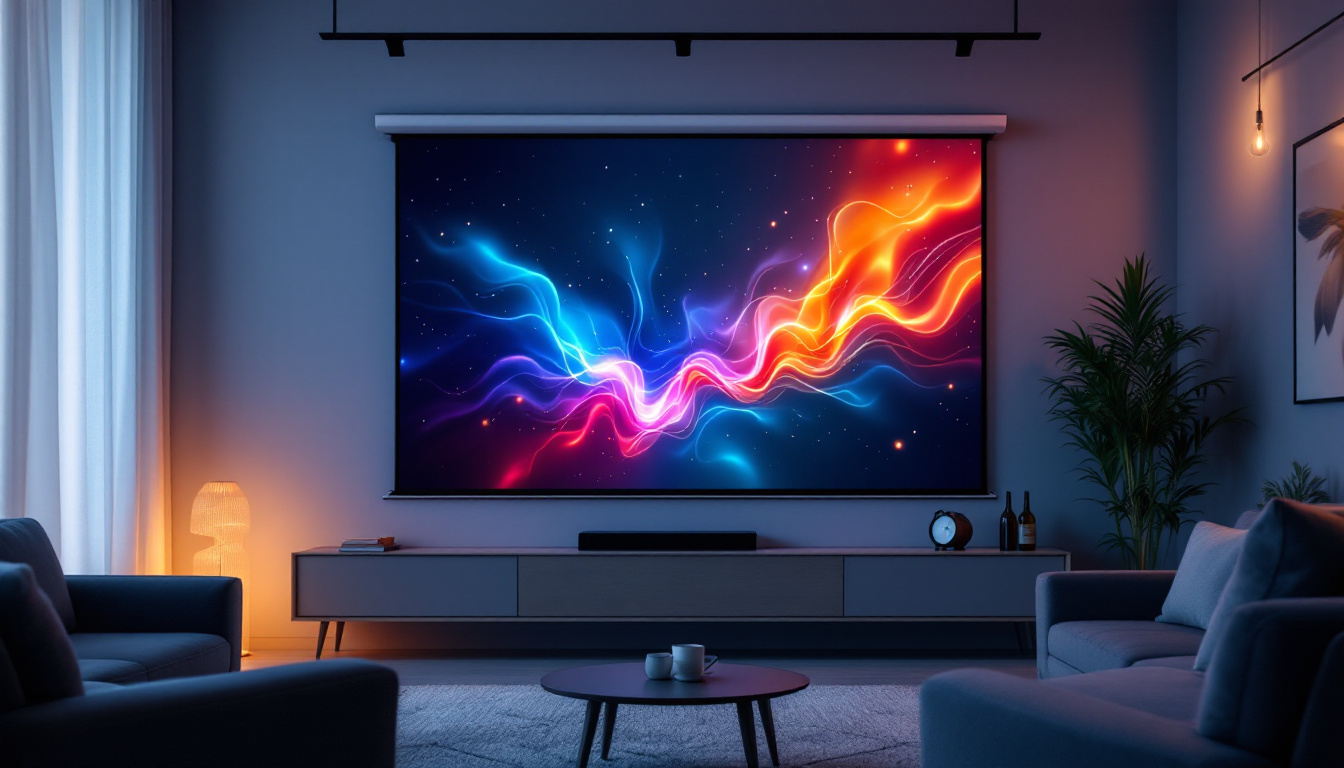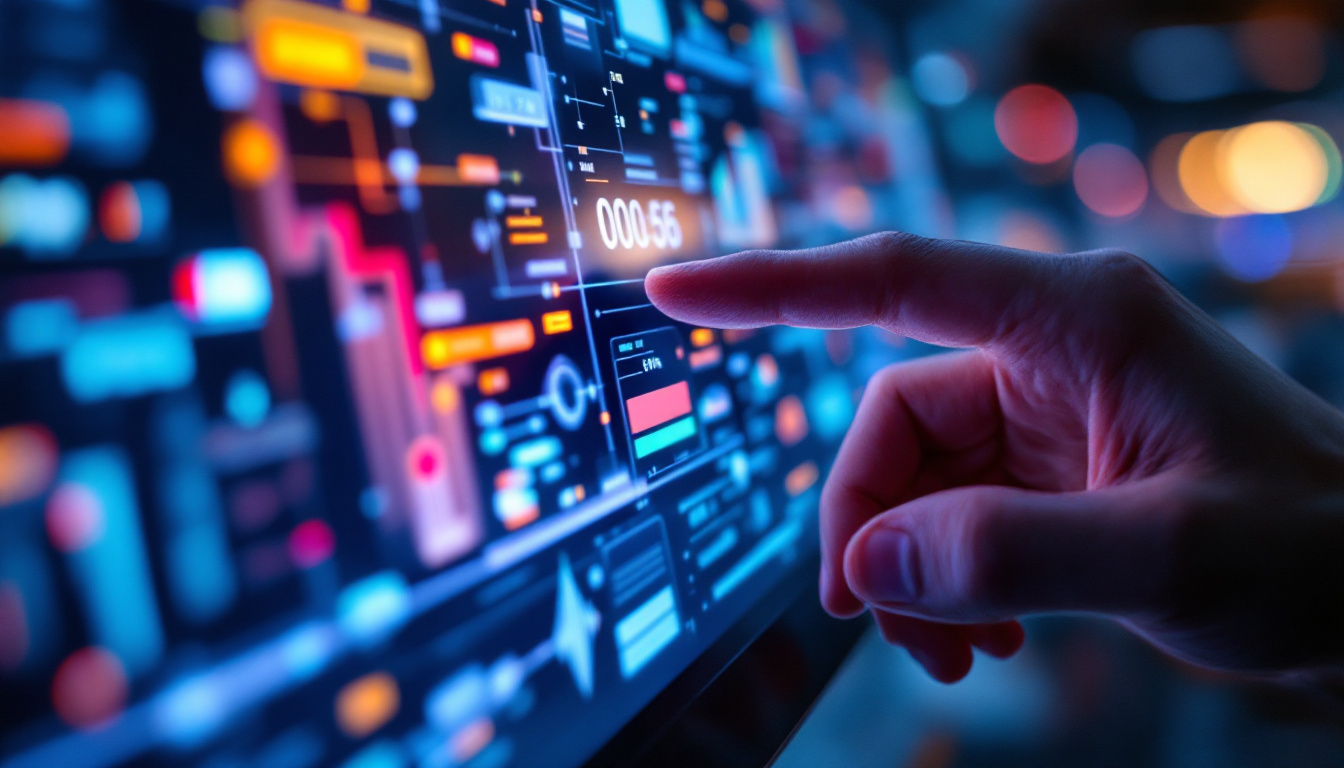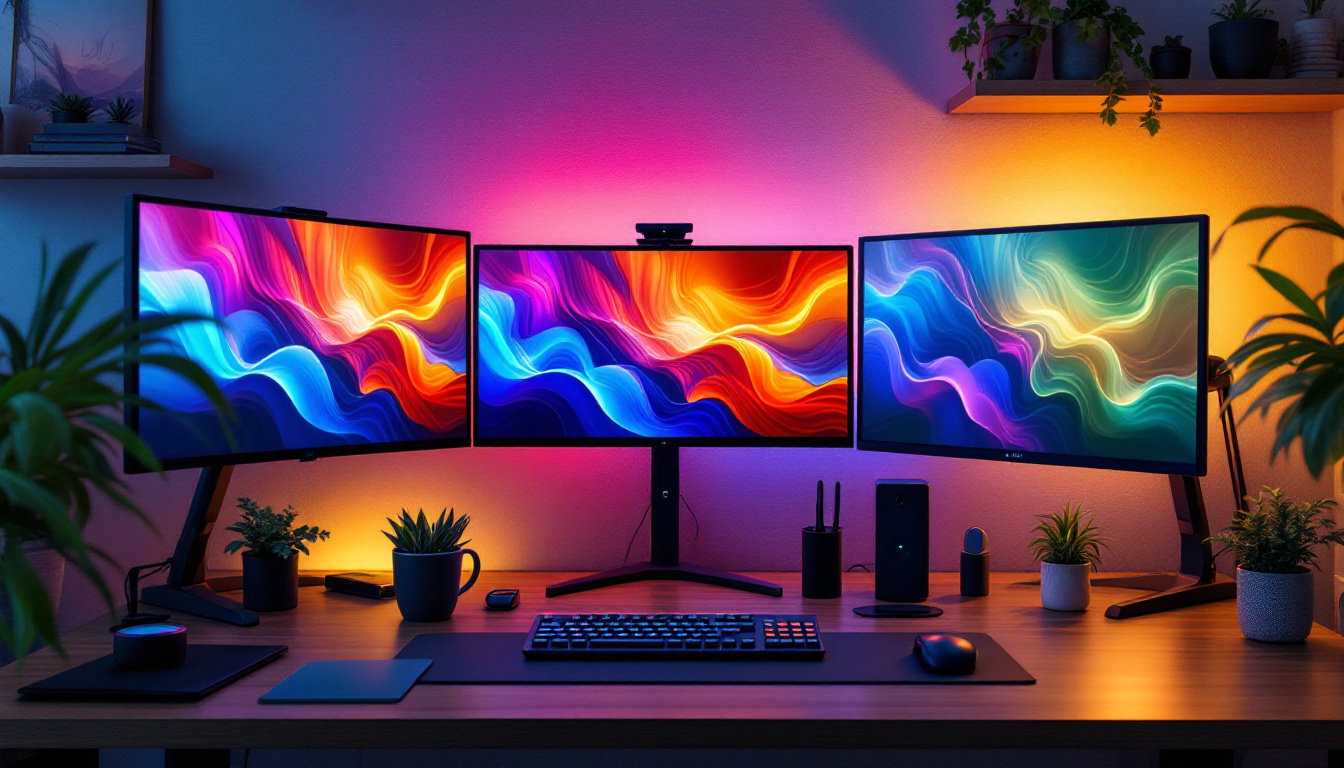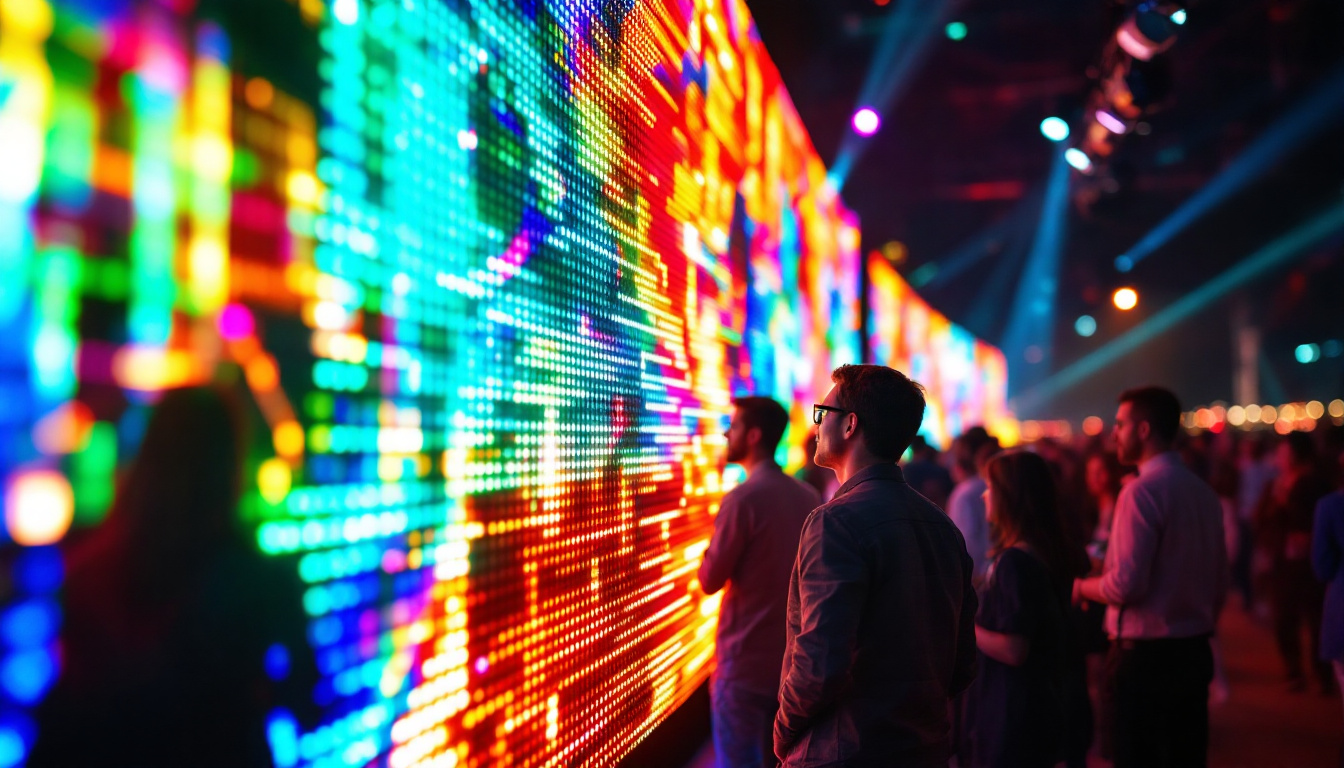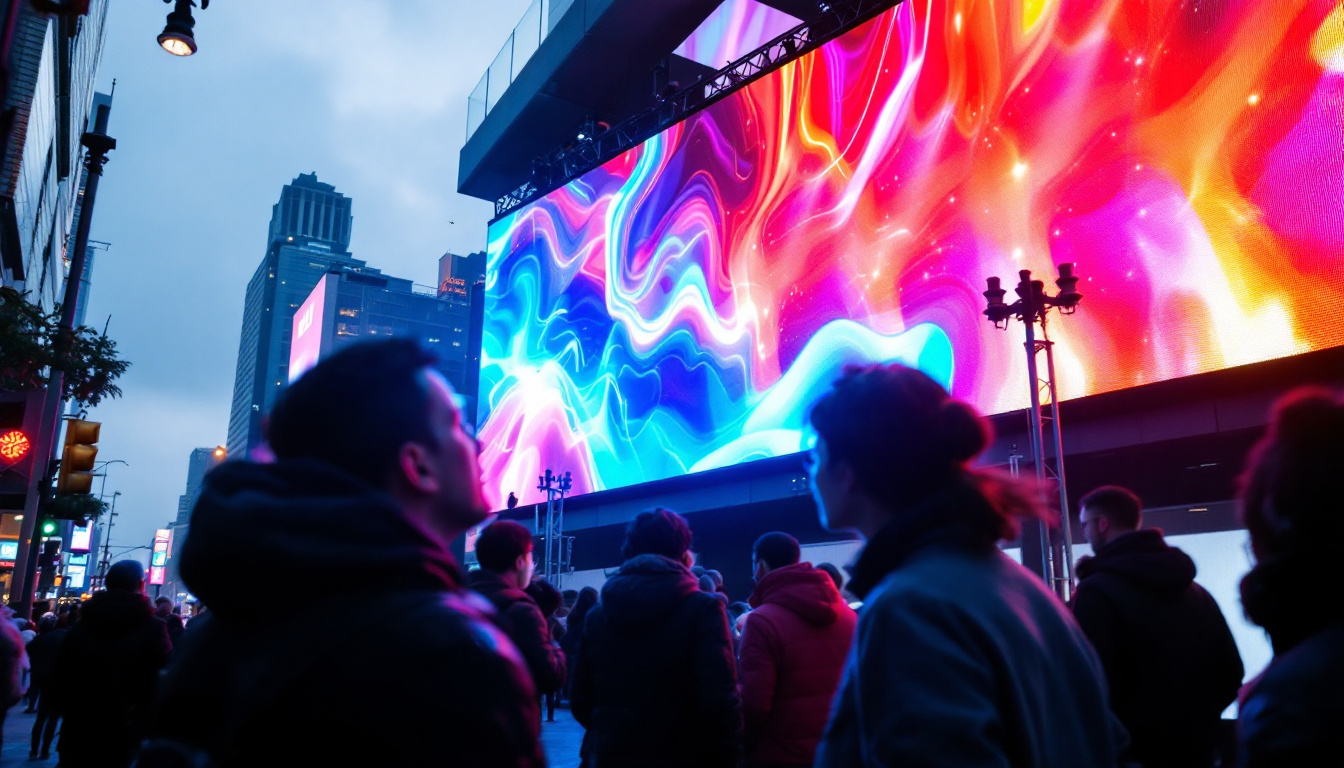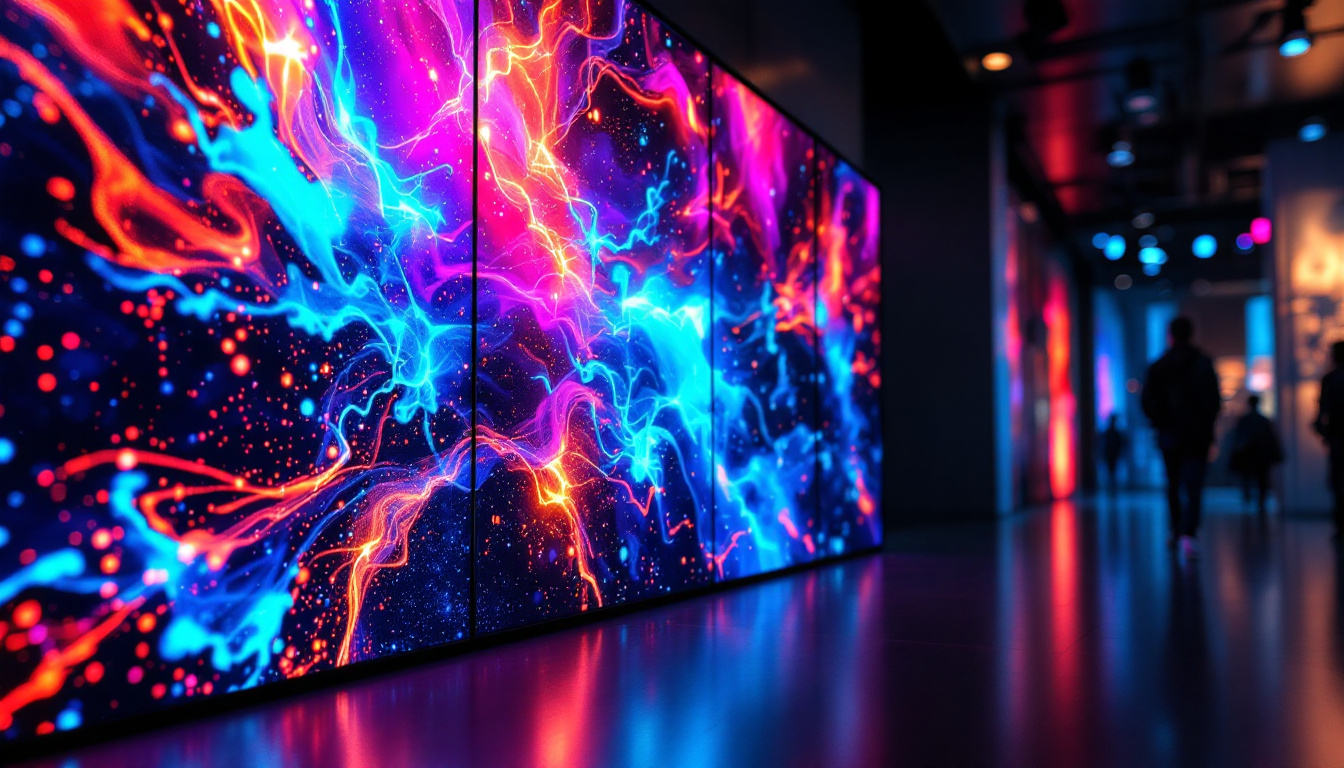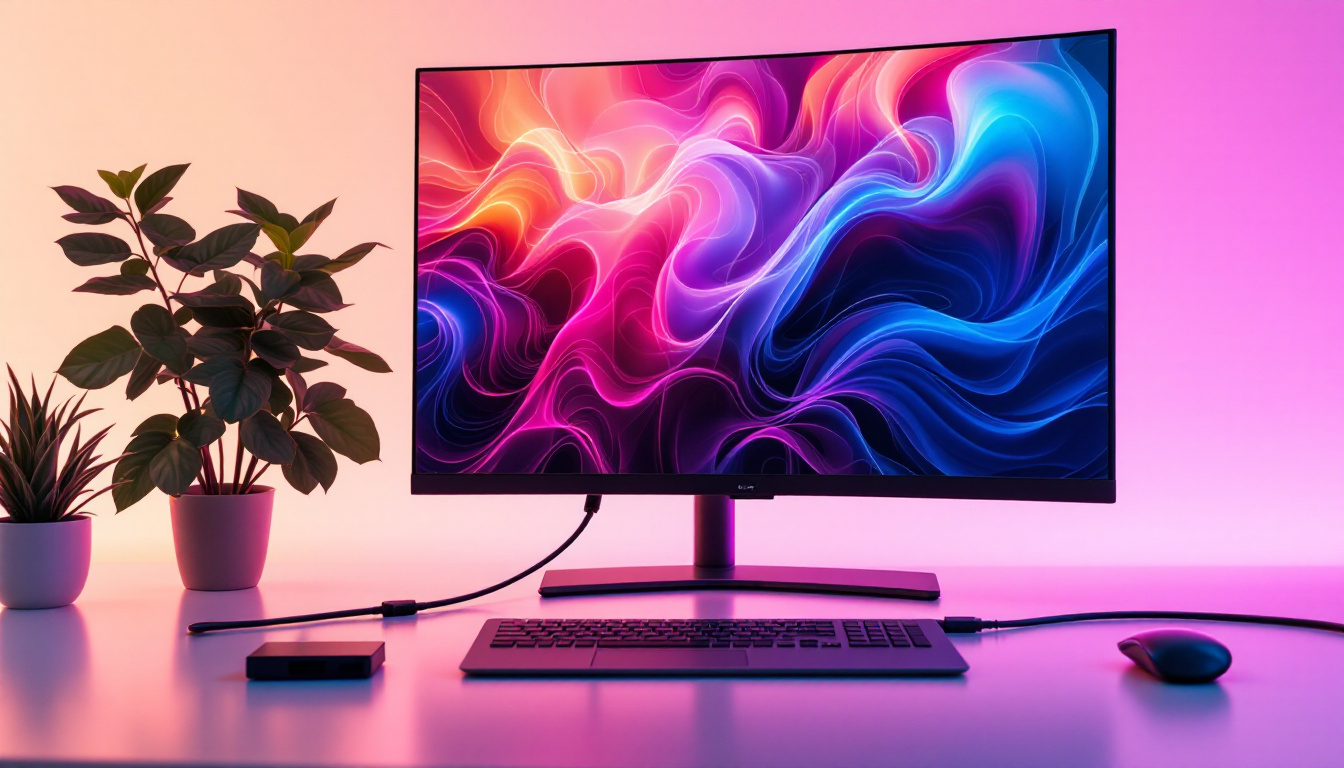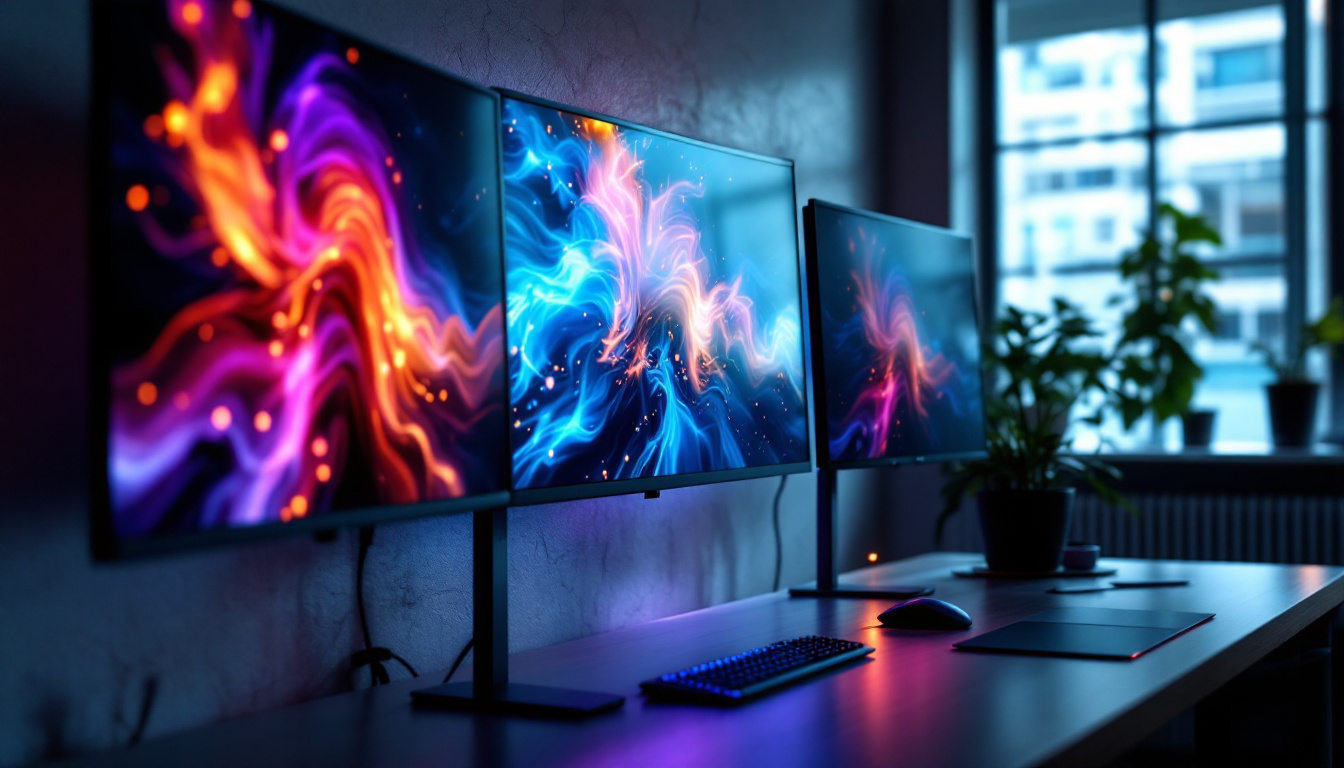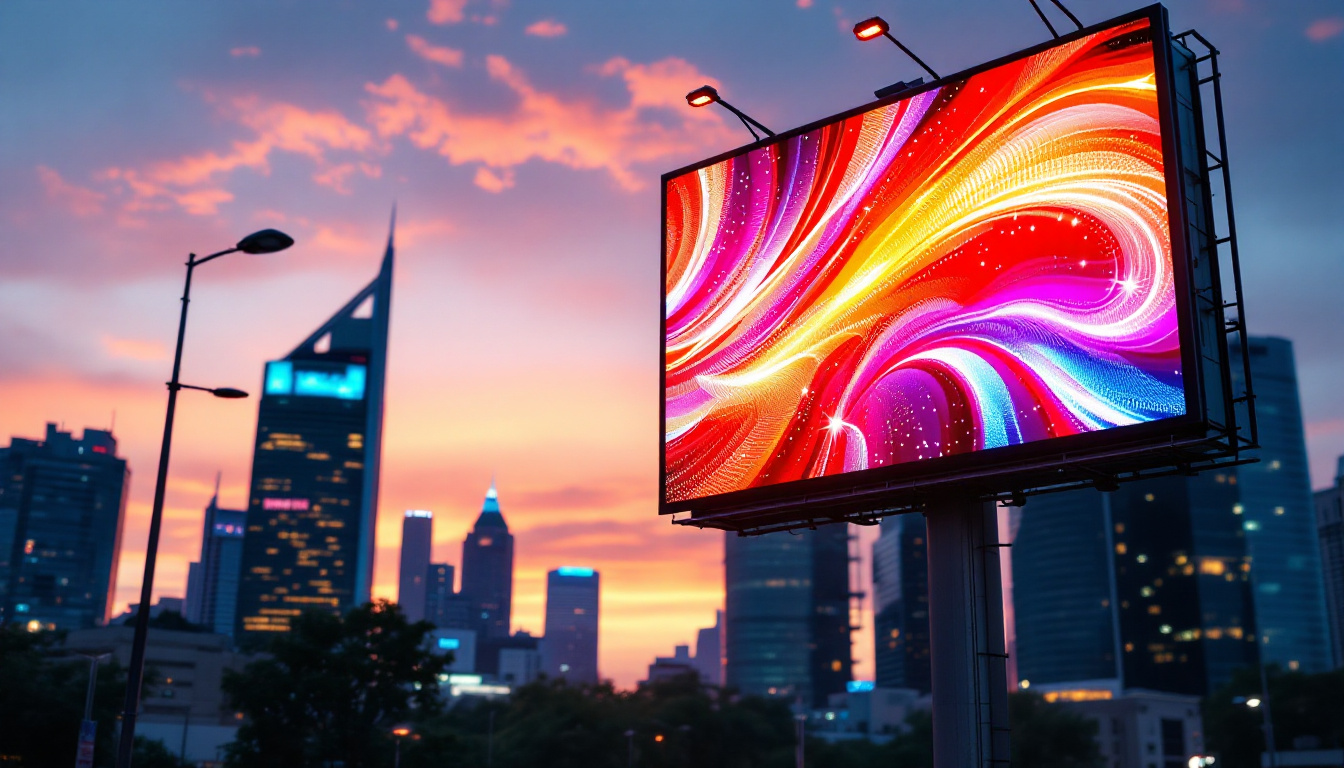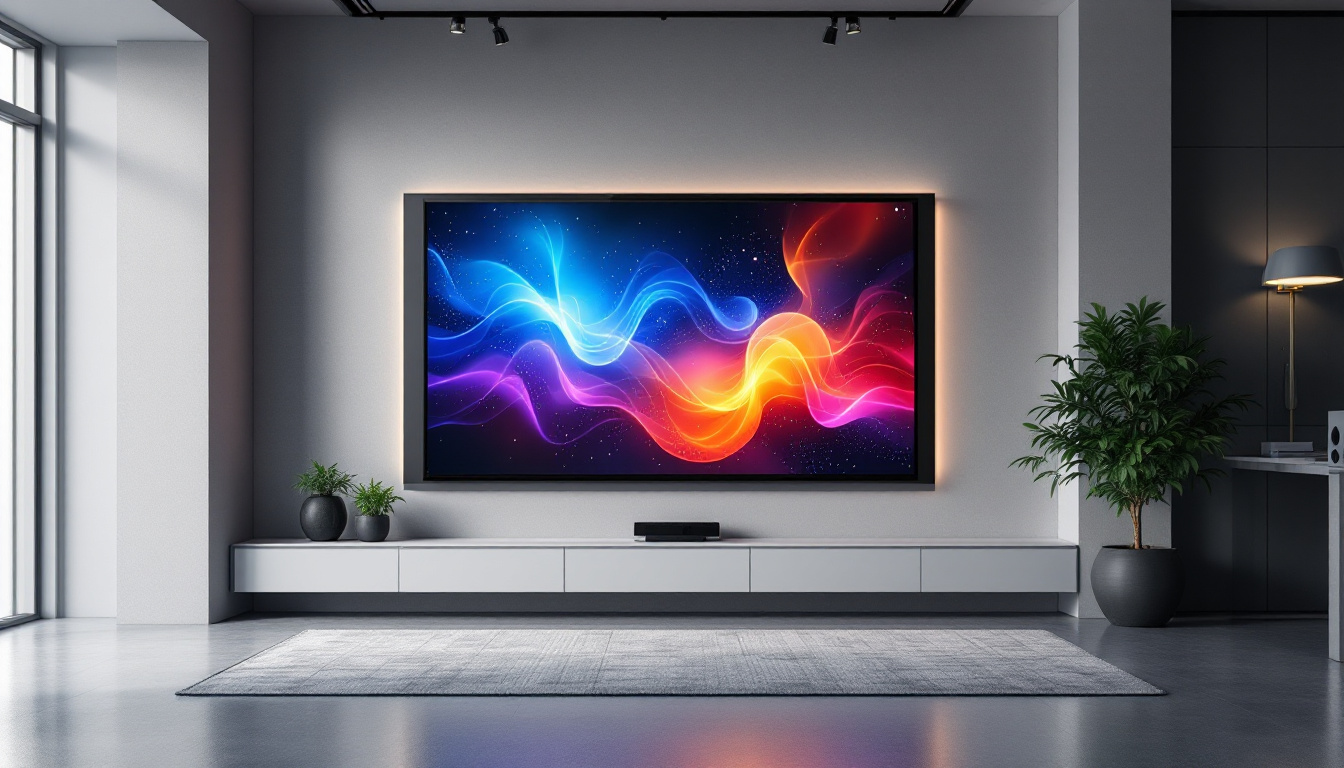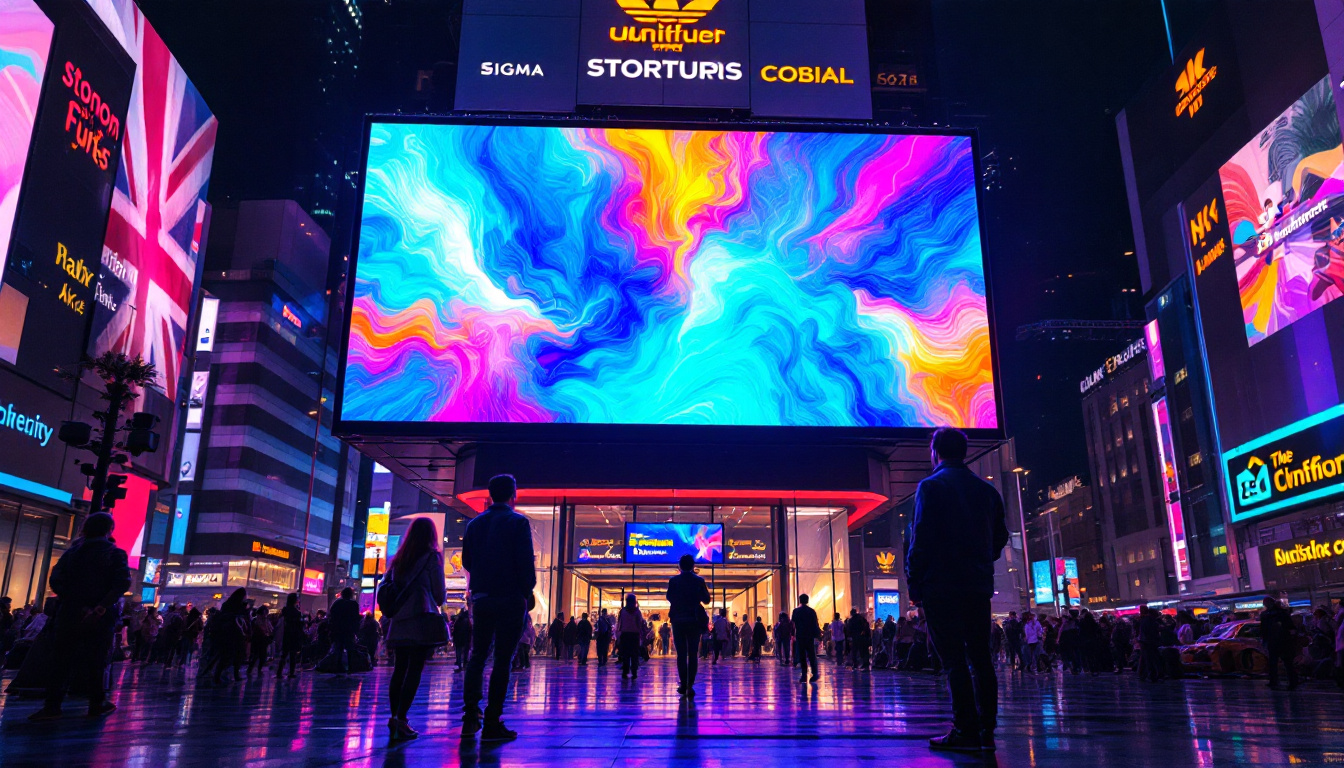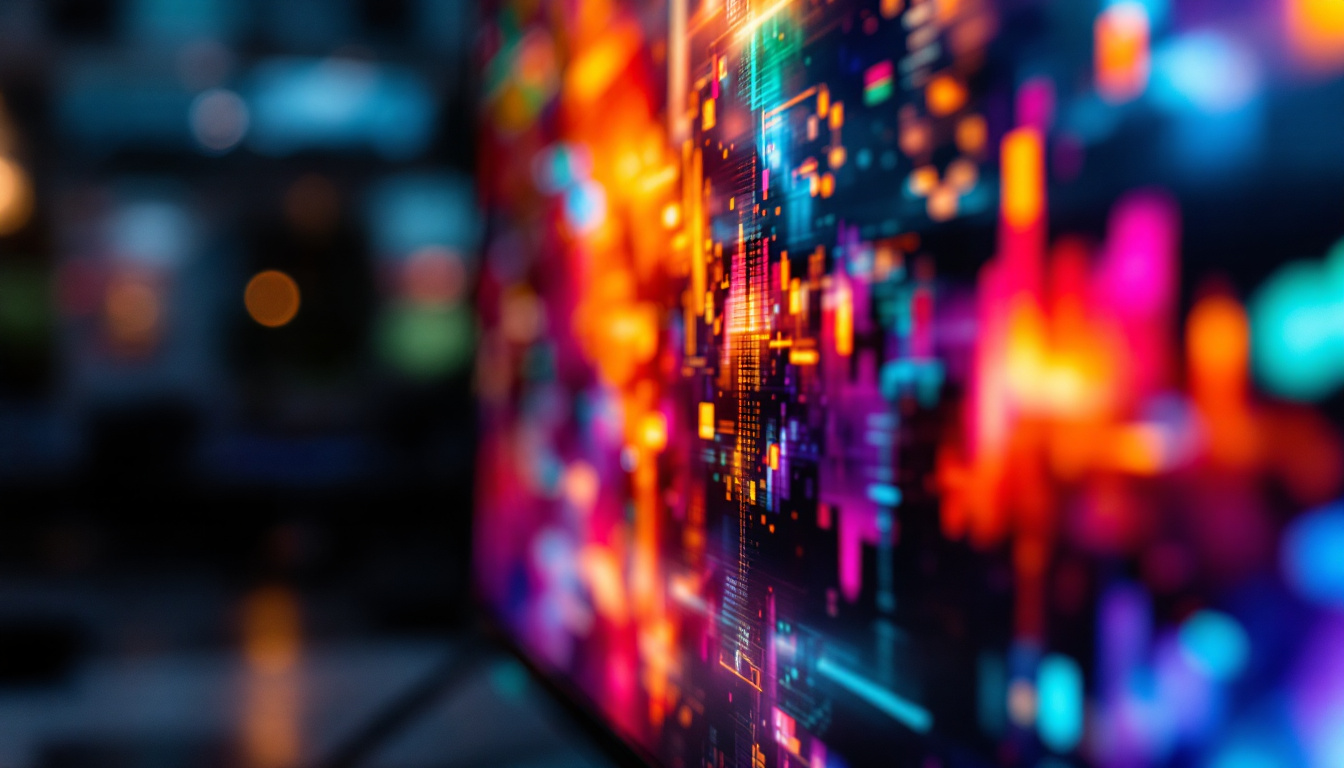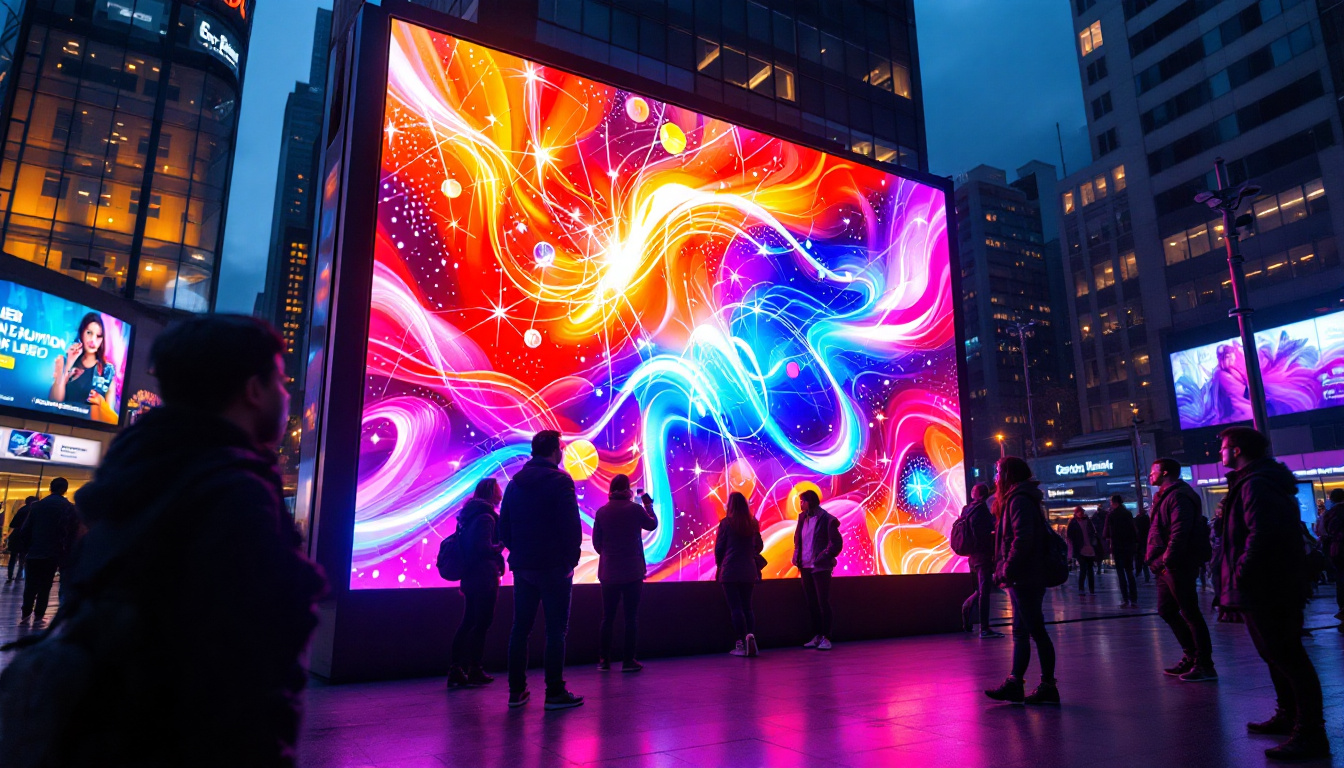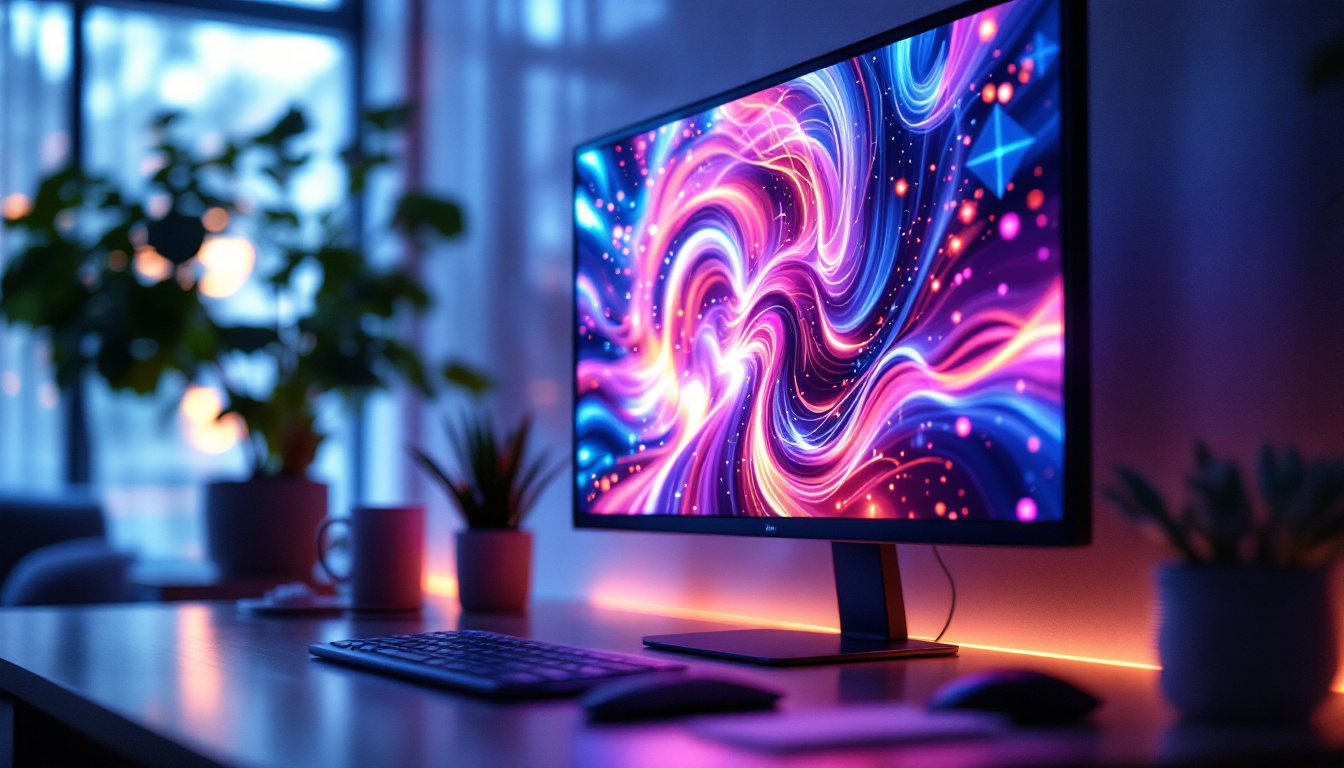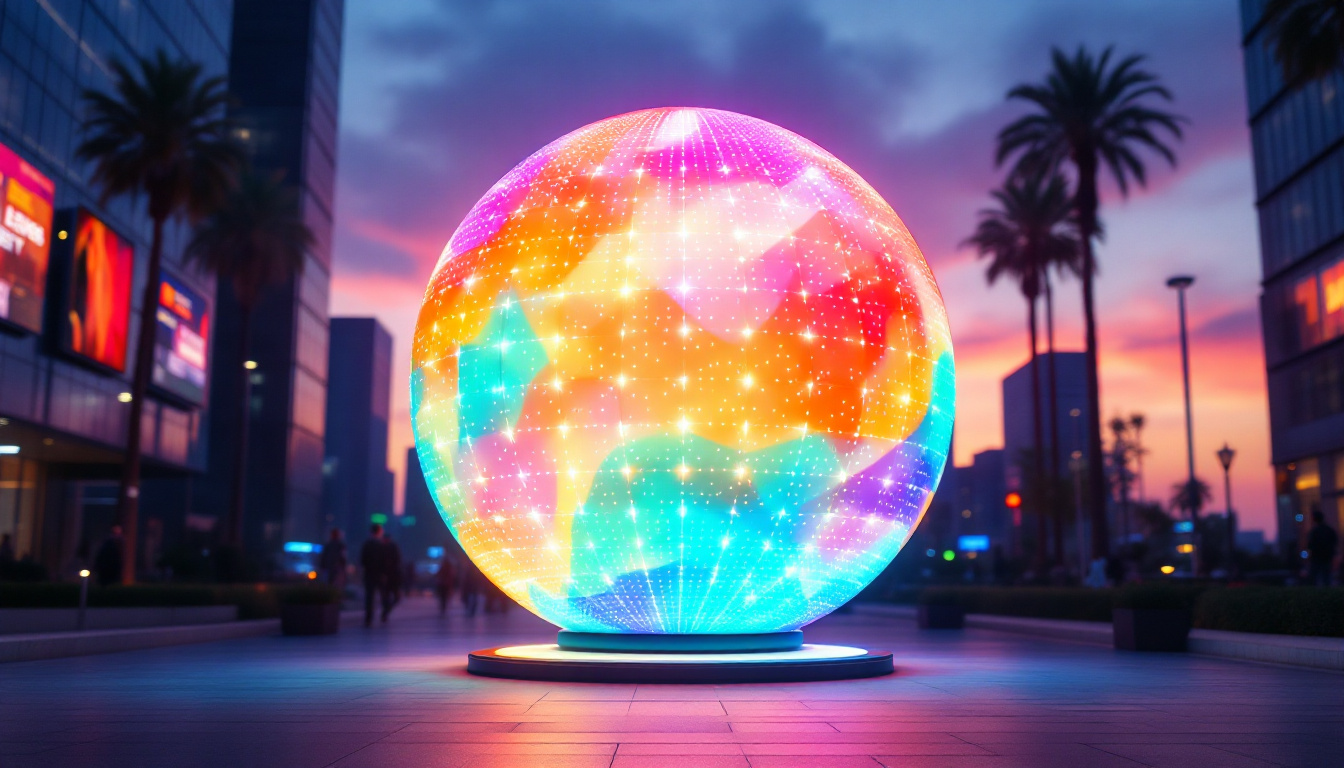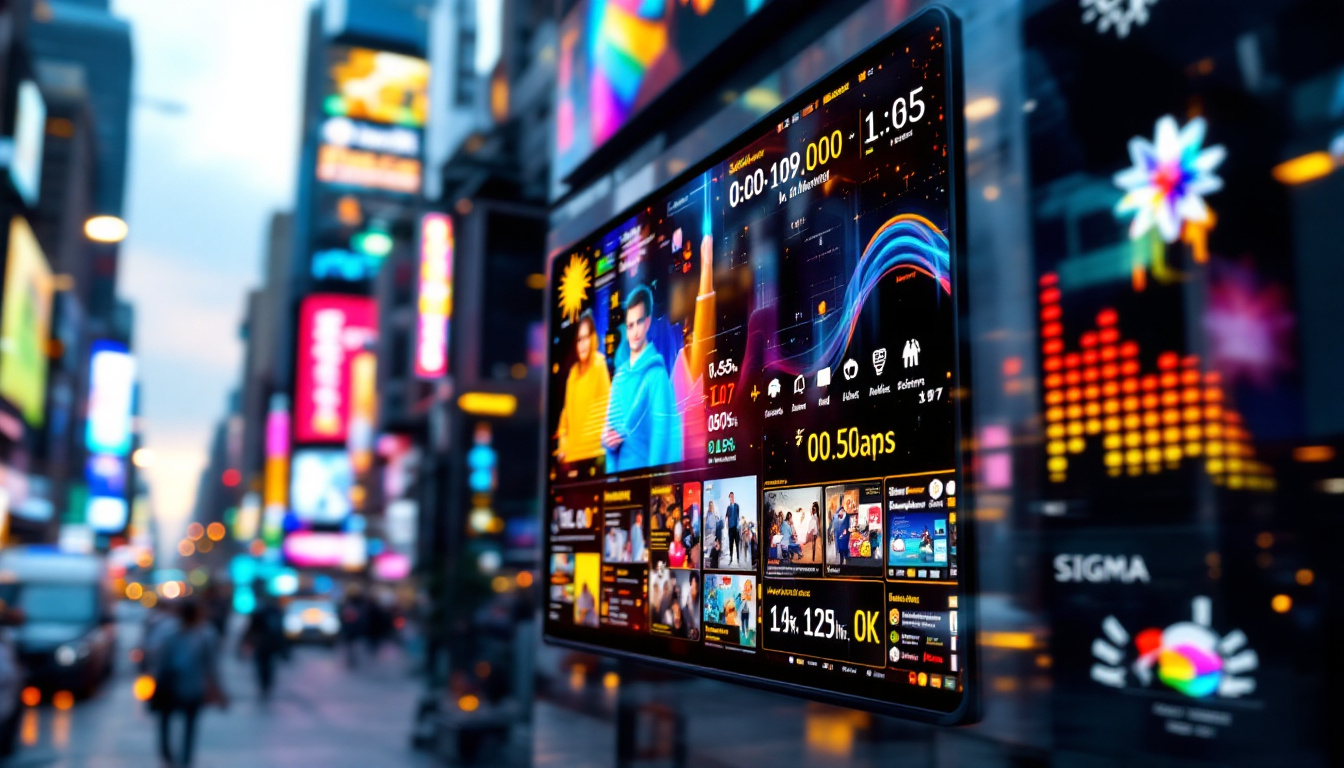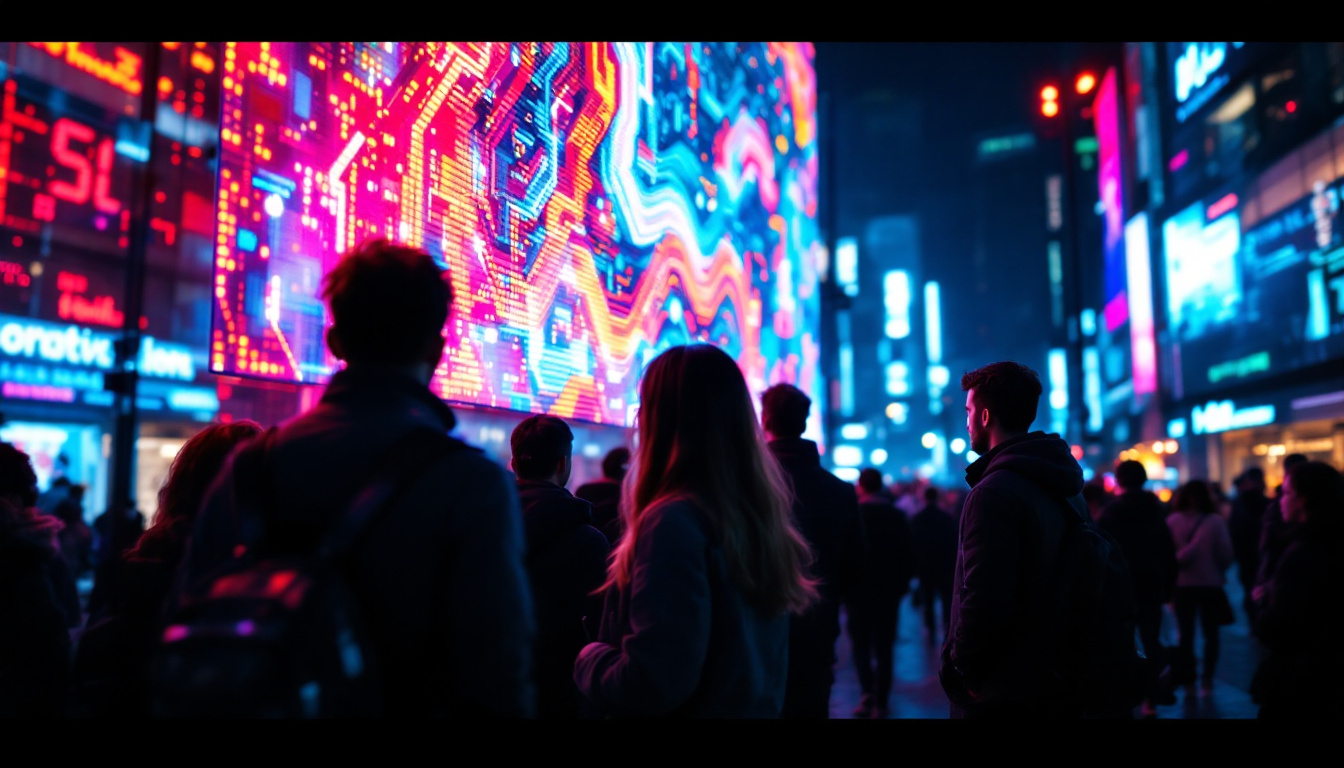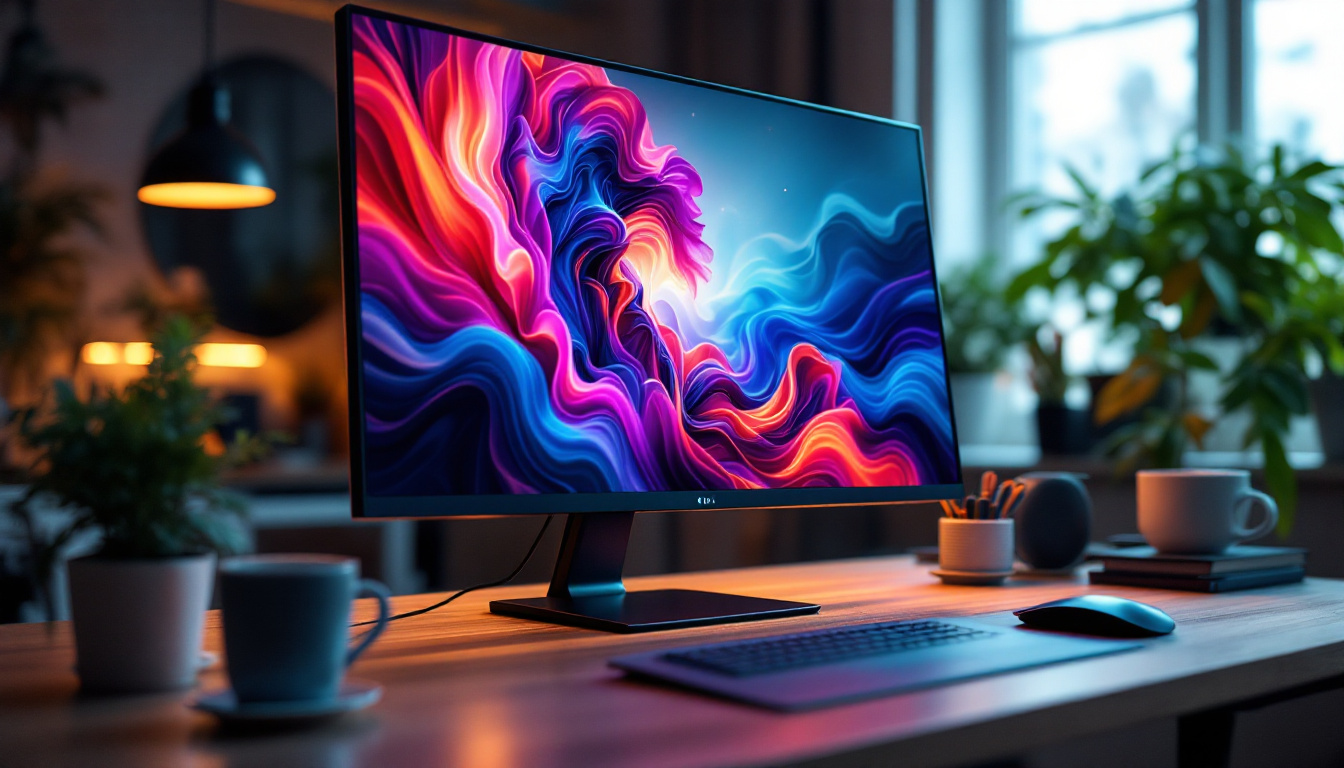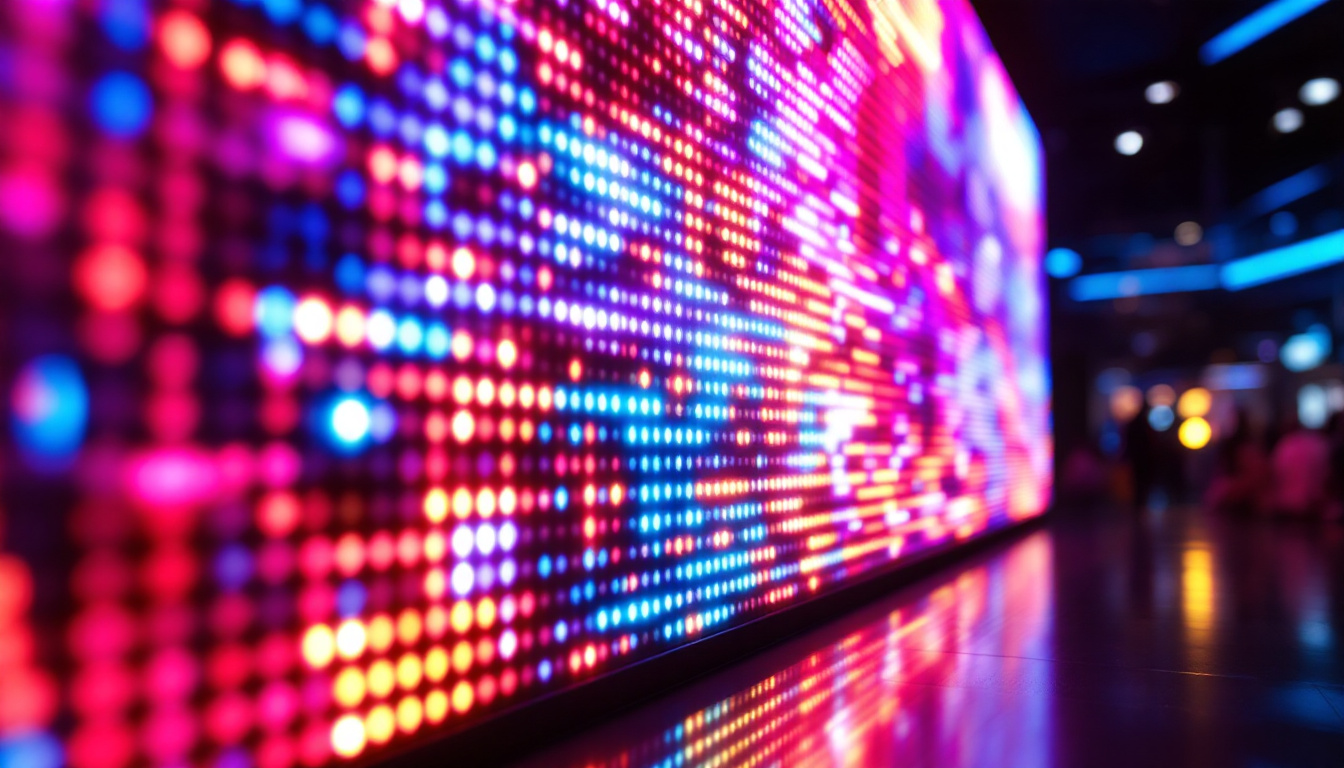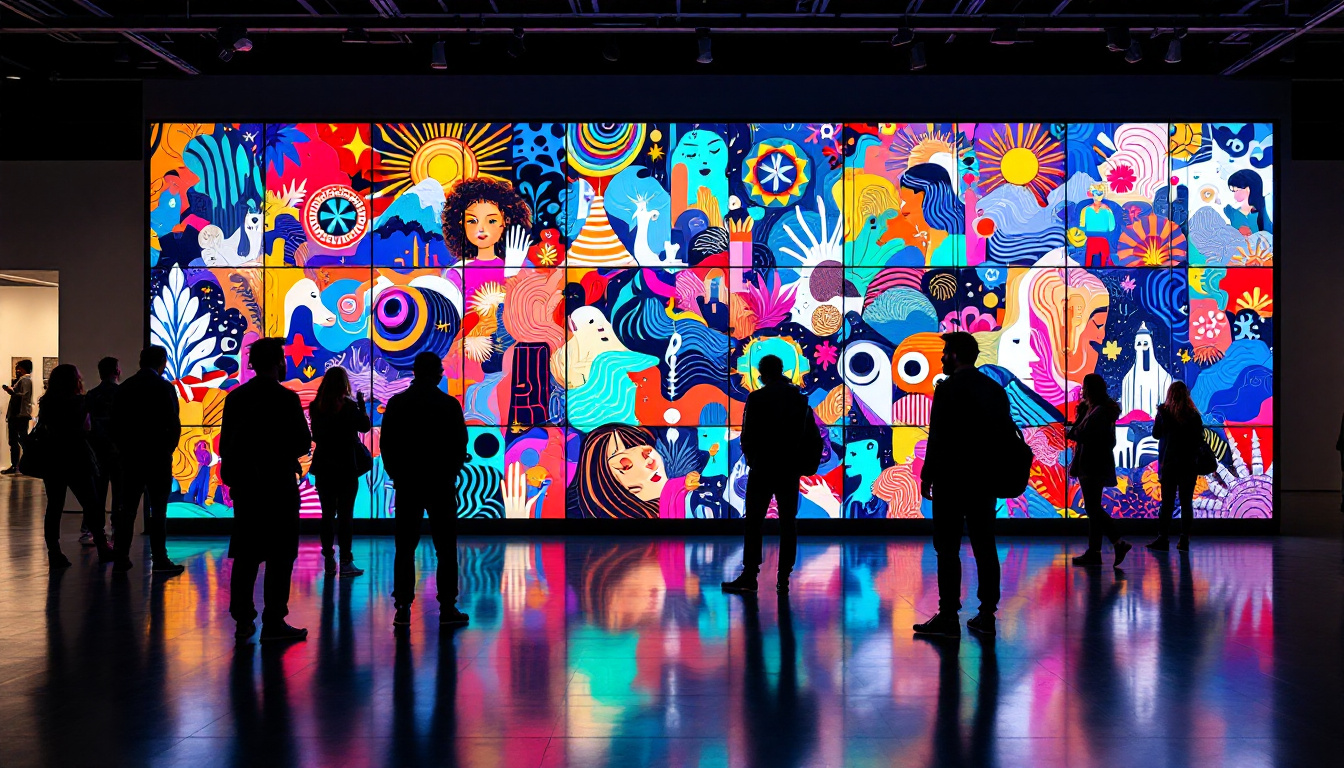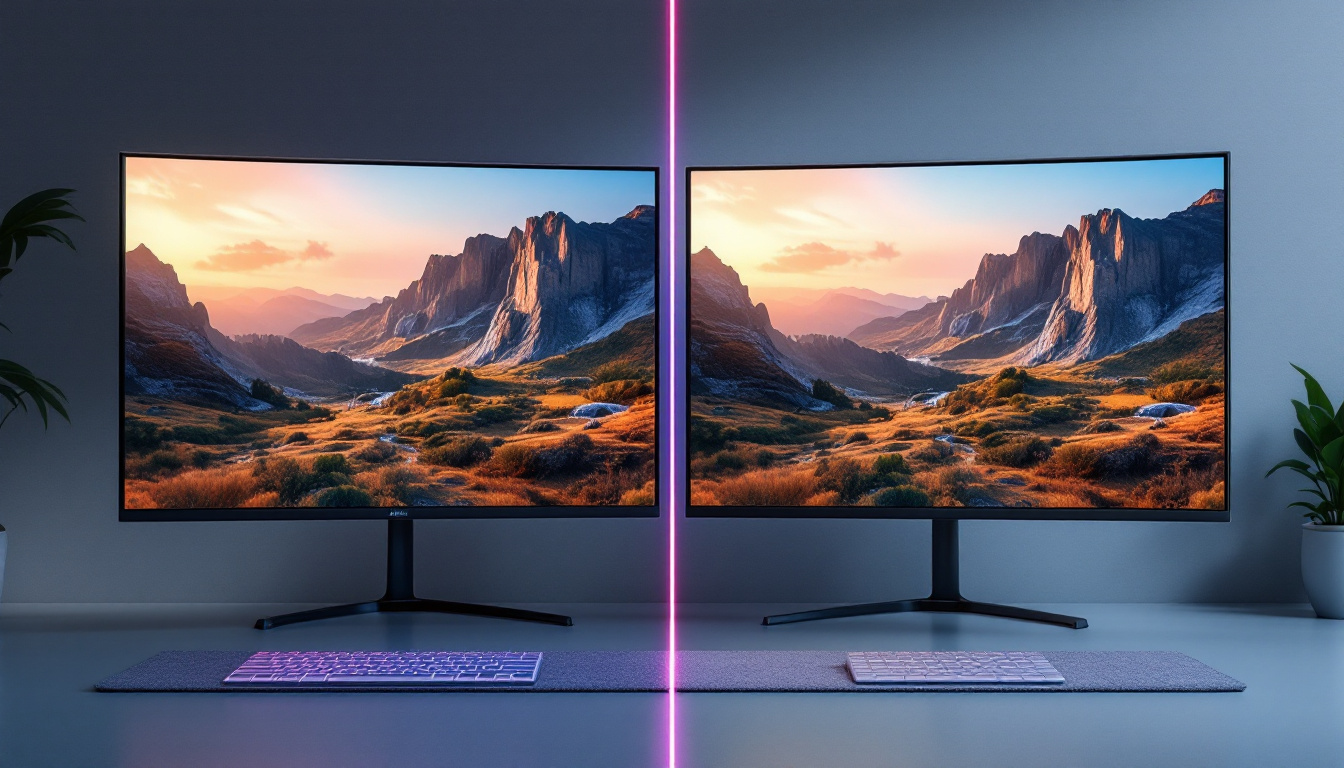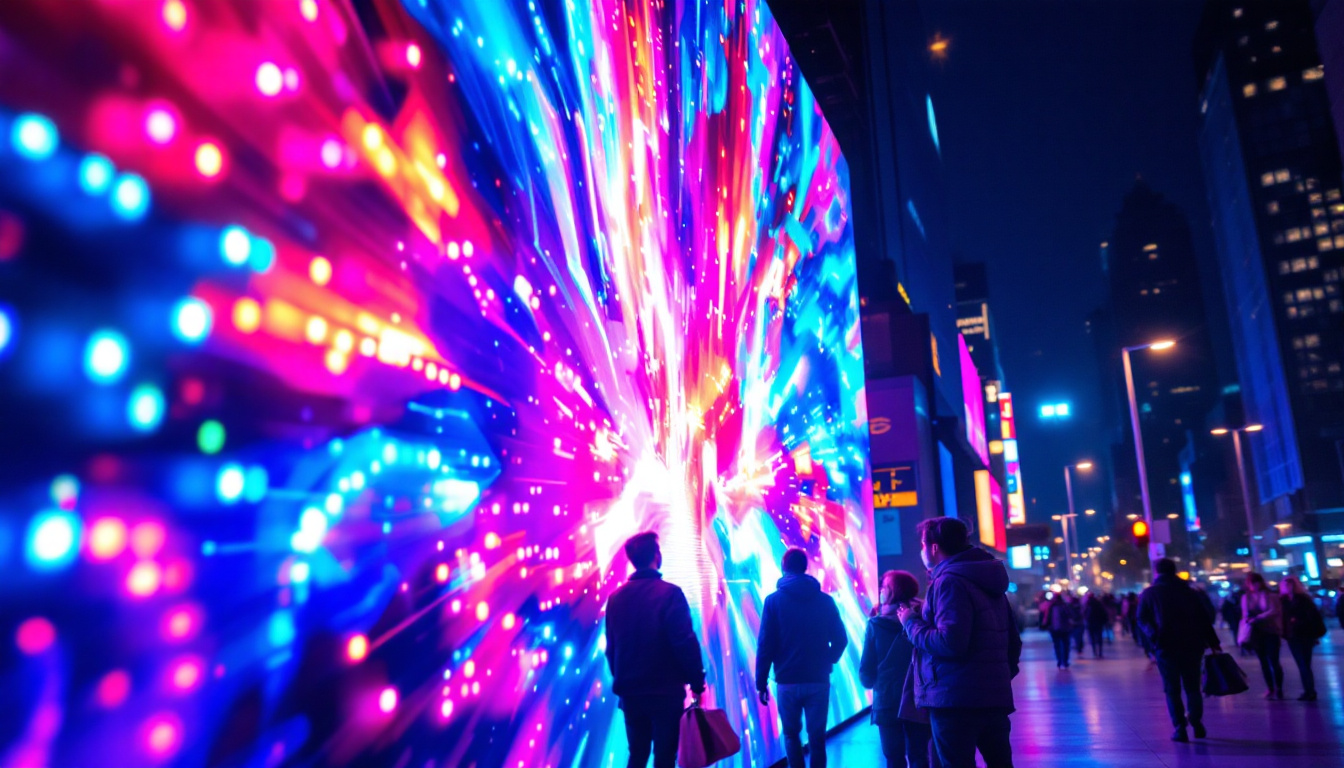In the realm of modern technology, LED displays have emerged as a transformative force, revolutionizing how information is conveyed visually. From advertising billboards to television screens and digital signage, LED technology has become ubiquitous. This article delves into the intricacies of LED displays, exploring their functionality, advantages, and the innovations that continue to shape their evolution.
Understanding LED Technology
Light Emitting Diodes (LEDs) are semiconductor devices that emit light when an electric current passes through them. This fundamental principle is at the heart of LED displays, which utilize arrays of these diodes to create vibrant images and videos. The technology has evolved significantly since its inception, leading to various applications across multiple industries.
The Basics of LED Displays
At their core, LED displays consist of numerous individual LEDs grouped together to form pixels. Each pixel can change color and intensity, allowing for the creation of dynamic images. The combination of red, green, and blue (RGB) LEDs enables the display to produce a wide spectrum of colors, making it possible to render detailed and vivid visuals.
LED displays can be categorized into two main types: direct view and backlit. Direct view displays are composed of individual LEDs that are visible from the front, while backlit displays use LEDs to illuminate a liquid crystal display (LCD) from behind. Both types have unique advantages and are suited for different applications.
Types of LED Displays
LED technology has diversified into several types of displays, each designed for specific uses. The most common types include:
- Indoor LED Displays: These are typically used in venues such as shopping malls, conference centers, and theaters. They offer high resolution and brightness, making them ideal for close viewing.
- Outdoor LED Displays: Designed to withstand harsh weather conditions, outdoor displays are larger and brighter. They are commonly seen in billboards, sports arenas, and public transportation hubs.
- Transparent LED Displays: These innovative displays allow light to pass through, making them suitable for applications where visibility is essential, such as storefronts and exhibitions.
The Advantages of LED Displays
LED displays offer numerous benefits that have contributed to their widespread adoption. Understanding these advantages can help businesses and consumers make informed decisions about their visual display needs.
Energy Efficiency
One of the most significant advantages of LED technology is its energy efficiency. LED displays consume considerably less power compared to traditional display technologies, such as incandescent or fluorescent lighting. This reduced energy consumption not only lowers operating costs but also minimizes the environmental impact.
As sustainability becomes a priority for many organizations, the energy efficiency of LED displays makes them an attractive option. Businesses can reduce their carbon footprint while benefiting from lower electricity bills.
Longevity and Durability
LED displays are known for their impressive lifespan, often exceeding 50,000 hours of use. This longevity translates to lower maintenance costs and fewer replacements over time. Additionally, LEDs are more resistant to shock and vibrations, making them ideal for high-traffic areas and outdoor environments.
The durability of LED technology ensures that displays remain operational in various conditions, reducing downtime and enhancing reliability. This resilience is particularly valuable for businesses that rely on continuous visual communication.
High-Quality Visuals
LED displays are renowned for their exceptional image quality. With high brightness levels and contrast ratios, they deliver sharp and vibrant visuals that capture attention. The ability to produce a wide color gamut allows for more lifelike images, enhancing the viewer’s experience.
Furthermore, advancements in LED technology have led to improvements in pixel density, resulting in higher resolutions. This capability is especially important for applications requiring detailed graphics, such as advertising and entertainment.
Innovations in LED Display Technology
The field of LED display technology is constantly evolving, with innovations that enhance performance and expand applications. Staying abreast of these developments is crucial for businesses and consumers alike.
Flexible and Curved Displays
One of the most exciting innovations in LED technology is the development of flexible and curved displays. These displays can be bent and shaped to fit various environments, enabling creative installations that were previously impossible. From curved screens in cinemas to flexible displays in retail spaces, the versatility of this technology is expanding the boundaries of visual communication.
Flexible LED displays can also be used in unique applications, such as wearable technology and automotive displays. This adaptability opens up new avenues for designers and marketers, allowing for more engaging and immersive experiences.
Smart LED Displays
As the Internet of Things (IoT) continues to grow, smart LED displays are becoming increasingly prevalent. These displays can connect to the internet and communicate with other devices, allowing for real-time updates and interactivity. For example, smart displays can show dynamic content based on audience engagement, weather conditions, or social media trends.
This level of interactivity enhances the effectiveness of advertising and information dissemination, making smart LED displays a valuable tool for businesses looking to engage their customers in innovative ways.
Enhanced Resolution and Pixel Technology
Advancements in pixel technology have led to the development of ultra-high-definition (UHD) LED displays. With pixel pitches shrinking, manufacturers can create displays with higher resolutions, resulting in sharper images and finer details. This improvement is particularly beneficial for applications requiring close viewing, such as in retail environments or control rooms.
Additionally, technologies such as MicroLED and MiniLED are emerging, offering even greater resolution and contrast. These innovations promise to redefine the standards of visual quality in the display industry.
Applications of LED Displays
The versatility of LED displays allows them to be utilized in a myriad of applications across various sectors. Understanding these applications can provide insight into the potential benefits of LED technology.
Advertising and Marketing
LED displays have become a cornerstone of modern advertising. Their ability to capture attention with vibrant colors and dynamic content makes them ideal for marketing campaigns. Businesses can showcase their products, services, and promotions in real-time, reaching a broader audience effectively.
Digital billboards, for instance, can rotate multiple advertisements throughout the day, maximizing exposure without the need for physical changes. This flexibility allows brands to adapt their messaging based on time, location, and audience demographics.
Entertainment and Events
In the entertainment industry, LED displays play a crucial role in enhancing the audience experience. Concerts, festivals, and sporting events utilize large LED screens to broadcast live performances, provide information, and create immersive environments.
Moreover, the use of LED technology in stage design has transformed theatrical productions, allowing for dynamic backdrops and visual effects that engage the audience on multiple levels. The ability to synchronize visuals with audio further enriches the overall experience.
Transportation and Public Information
LED displays are increasingly used in transportation systems to provide real-time information to passengers. Train stations, airports, and bus terminals utilize LED screens to display arrival and departure times, gate information, and emergency alerts.
This application not only enhances the efficiency of transportation systems but also improves passenger experience by keeping them informed and engaged. The visibility and clarity of LED displays ensure that vital information is easily accessible to everyone.
Challenges and Considerations
While LED displays offer numerous advantages, there are also challenges and considerations that stakeholders must address. Understanding these factors is essential for making informed decisions regarding LED technology.
Initial Investment Costs
One of the primary challenges associated with LED displays is the initial investment cost. High-quality LED technology can be expensive, which may deter some businesses from making the switch. However, it is important to consider the long-term savings associated with energy efficiency and reduced maintenance costs.
Many organizations find that the return on investment (ROI) justifies the initial expenditure, especially when considering the enhanced visibility and engagement that LED displays provide.
Environmental Impact
Although LED technology is generally more environmentally friendly than traditional display methods, concerns about the disposal of electronic waste remain. As LED displays reach the end of their lifespan, proper recycling and disposal methods must be employed to minimize environmental impact.
Manufacturers and consumers alike should prioritize sustainability in their practices, ensuring that LED technology is not only efficient but also environmentally responsible.
Technological Obsolescence
The rapid pace of technological advancement can lead to concerns about obsolescence. As new innovations emerge, older LED displays may become outdated, prompting businesses to consider upgrades sooner than anticipated. Staying informed about industry trends and advancements is crucial for making strategic decisions regarding display technology.
The Future of LED Displays
The future of LED displays is bright, with ongoing innovations and advancements poised to further enhance their capabilities. As technology continues to evolve, the possibilities for LED displays will expand, opening new avenues for creativity and engagement.
Integration with Augmented and Virtual Reality
As augmented reality (AR) and virtual reality (VR) technologies gain traction, the integration of LED displays with these platforms is likely to become more prevalent. This synergy can create immersive experiences that blend the physical and digital worlds, offering new ways for businesses to engage their audiences.
For example, AR applications can utilize LED displays to overlay digital information onto real-world environments, enhancing the viewer’s experience and interaction with their surroundings.
Advancements in Display Technology
Future advancements in display technology, such as the development of organic LEDs (OLEDs) and quantum dot displays, may further enhance visual quality and energy efficiency. These technologies promise to deliver even sharper images, greater color accuracy, and improved performance in various lighting conditions.
As these innovations emerge, they will likely reshape the landscape of visual communication, providing businesses with new tools to captivate and engage their audiences.
Continued Growth in Applications
The applications of LED displays are expected to continue expanding across various sectors. As industries recognize the benefits of dynamic visual communication, the demand for LED technology will likely grow. From retail to education, healthcare to transportation, LED displays will play an increasingly vital role in conveying information and enhancing experiences.
Conclusion
LED displays have transformed the way information is presented and consumed, offering a blend of energy efficiency, longevity, and high-quality visuals. As technology continues to advance, the potential for LED displays to innovate and expand their applications is limitless. By understanding the intricacies of LED technology and its benefits, businesses and consumers can harness the power of this dynamic medium to enhance communication, engagement, and overall experience.
In a world where visual communication is paramount, LED displays stand at the forefront, paving the way for a brighter and more engaging future.
Discover the Future of Visual Communication with LumenMatrix
Ready to elevate your visual presence and captivate your audience like never before? Explore LumenMatrix’s innovative LED display solutions, where cutting-edge technology meets creative design. From Indoor LED Walls to Custom Displays, LumenMatrix offers a diverse range of products tailored to your unique needs. Embrace the future of digital signage and transform your space into a dynamic visual experience. Check out LumenMatrix LED Display Solutions today and join the revolution in visual communication.

